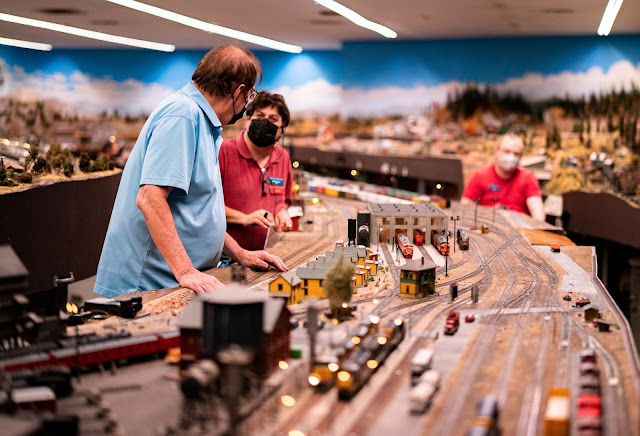One Way to Tidy Up
You might think you're pretty good at organizing and arranging your possessions. Sure, you own a lot, and you don't use all of it, but it's boxed or binned or shelved, not strewn down the hallway. You've got a handle on all of it, or so you think.
But according to decluttering guru Marie Kondo, storage experts like you are hoarders in disguise.
The purpose of tidying
Marie Kondo's best-selling book, The Life-Changing Magic of Tidying Up, is intended to help people do more than clean, organize, and store. She advocates a one-time process of mindful decluttering, after which her clients end up surrounded entirely by things that enhance their lives, unburdened by stuff that is unwanted or unused. Even her book, she says, should be passed along when it's no longer needed.
Instead of decluttering room by room, Kondo tackles belongings by category, beginning with what she believes is easiest to part with. Clothes, then books, documents, miscellany (including kitchen items, linens, and décor), and last and most difficult, photos and mementos. The process of making a decision about each item gets easier with all this practice.
Your mindset during this process is important. Kondo explains:
Focusing solely on throwing things away can only bring unhappiness. Why? Because we should be choosing what we want to keep, not what we want to get rid of.After all, what is the point in tidying? If it's not so that our space and the things in it can bring us happiness, then I think there is no point at all.Keep only those things that speak to your heart. Then take the plunge and discard all the rest.
Organizing stuff creates the illusion that there is no clutter. But sooner or later, all the storage units are full, and your house once again overflows with things. Kondo wants to solve that problem.
You begin by putting every piece of clothing you own on the floor in the middle of the room. Every piece. Make piles of pants, blouses, skirts, tees, dresses, jeans, sweaters, jackets, coats, socks, undies, pajamas, workout wear, bathing suits, sandals, boots, athletic shoes, high heels, scarves, handbags.... Check every closet, every drawer, every bin where clothing might lurk, because if you come across clothing later in the process, you must automatically discard it, since you obviously don't need or care about something you don't even remember owning!
For most of us, this is an eye-opening exercise, because we own so much. I thought my wardrobe was fairly small until I brought everything out into the open, and then I couldn't ignore the reality. I had piles of clothing. I had stuff in several sizes, in colors and styles I didn't like, duplicate items, off-season items I didn't want to wear again, shoes that I knew gave me blisters.
Kondo's brilliant insight
When we tidy by category, not by location, we're able to grasp the overall volume of our belongings. And we are staggered by it! At that point, we're able to choose to keep only what is useful, beautiful, and appropriate. We can see quite clearly what we need and what we don't, what lifts our spirits and what weighs us down.
For the next category, books, I pulled every single volume off all of the book shelves, and books and magazines from under the coffee table and my bedside table. There were piles of books.
For the next category, books, I pulled every single volume off all of the book shelves, and books and magazines from under the coffee table and my bedside table. There were piles of books.
I love books, and I love to read. Many of the books had ideas I had absorbed, that have become part of me, but many more had ideas, stories, and characters I couldn't even remember. A few might be read or referred to again, but many could be passed on to benefit someone else. The ones I couldn't even remember...why was I keeping them? To prove I had read them? To prove that I'm "smart" and educated? To avoid having empty shelves? Silly reasons, every one.
I handled (and dusted) every book, and it was easy to choose some beautiful editions of Jane Austen and The Lord of the Rings, plus a few of my childhood favorites. I kept some novels and non-fiction books that I love to re-read, a few spiritual texts, and about a dozen newer unread books that still look interesting to me. I got rid of almost 70% of my books and two bookcases. My house is less crowded, and every book I own is a treasure.
I handled (and dusted) every book, and it was easy to choose some beautiful editions of Jane Austen and The Lord of the Rings, plus a few of my childhood favorites. I kept some novels and non-fiction books that I love to re-read, a few spiritual texts, and about a dozen newer unread books that still look interesting to me. I got rid of almost 70% of my books and two bookcases. My house is less crowded, and every book I own is a treasure.
Was it hard to give away things that once meant something to me? Was it a waste of money? I've learned a lot from books, and I've enjoyed them, but Kondo pointed out that I don't need to keep them if they've fulfilled their purpose. And I've become the person I am through reading those books, so they were never a waste.
While decluttering, I could acknowledge the books' contributions, be thankful, and keep only what is important to me now, with no need for guilt or sadness.
Discarding something doesn't mean giving up your experiences or identity.
Discarding something doesn't mean giving up your experiences or identity.
Marie Kondo teaches that "your real life begins after putting your house in order." She wants her clients and readers to neither cling to the past nor hoard for the future, but to confidently choose what is truly important to their lives today. I'd say that's a worthy goal.






Comments
Post a Comment